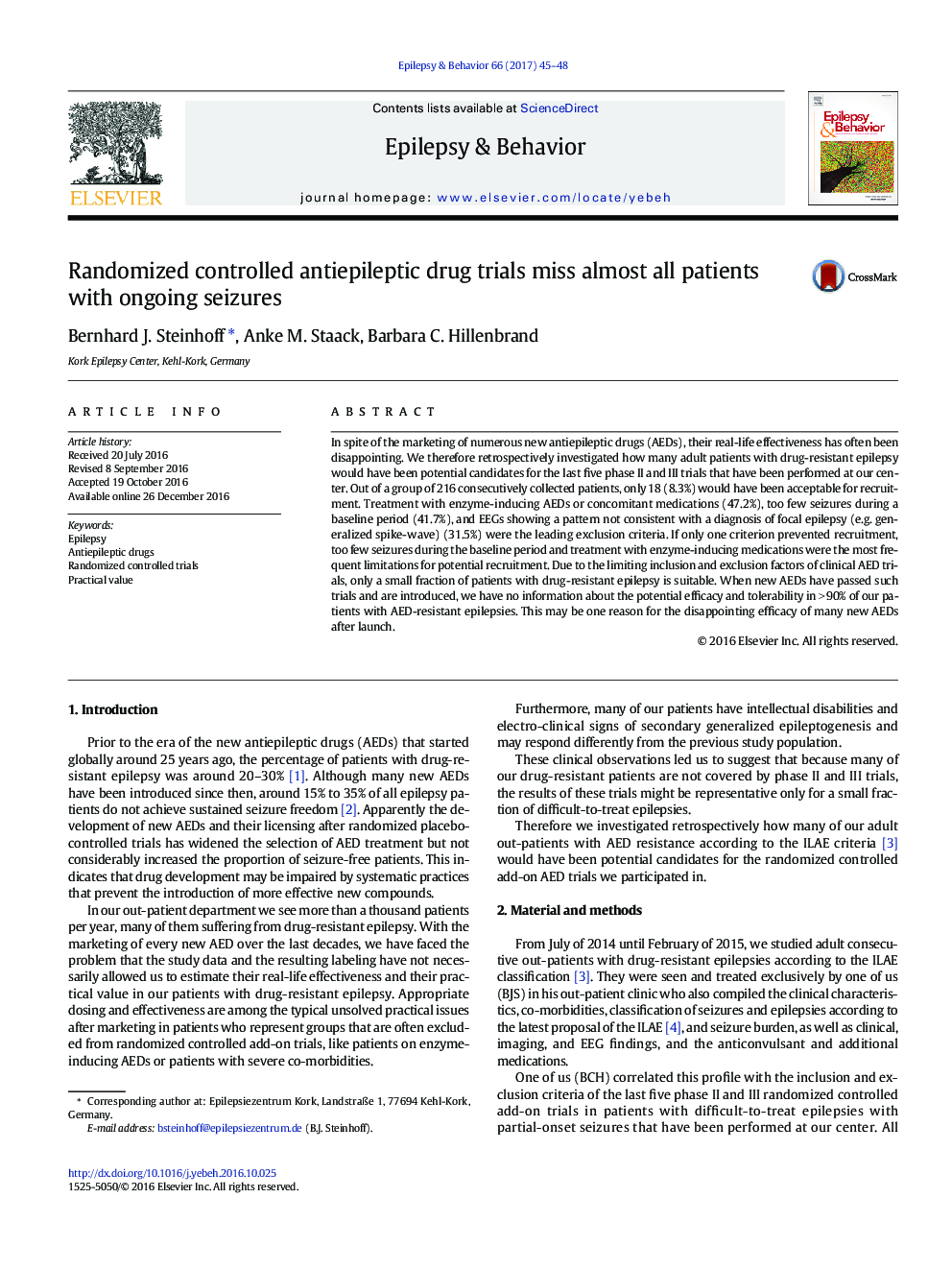| کد مقاله | کد نشریه | سال انتشار | مقاله انگلیسی | نسخه تمام متن |
|---|---|---|---|---|
| 5628006 | 1579826 | 2017 | 4 صفحه PDF | دانلود رایگان |
- Retrospective study
- Incidence of drug-resistant patients
- Proportion of these patients appropriate for the last phase II and III AED trials
- 18 of 216 patients (8.3%) would have been acceptable for recruitment.
- This may be one reason for the disappointing efficiency of many new AEDs after launch
In spite of the marketing of numerous new antiepileptic drugs (AEDs), their real-life effectiveness has often been disappointing. We therefore retrospectively investigated how many adult patients with drug-resistant epilepsy would have been potential candidates for the last five phase II and III trials that have been performed at our center. Out of a group of 216 consecutively collected patients, only 18 (8.3%) would have been acceptable for recruitment. Treatment with enzyme-inducing AEDs or concomitant medications (47.2%), too few seizures during a baseline period (41.7%), and EEGs showing a pattern not consistent with a diagnosis of focal epilepsy (e.g. generalized spike-wave) (31.5%) were the leading exclusion criteria. If only one criterion prevented recruitment, too few seizures during the baseline period and treatment with enzyme-inducing medications were the most frequent limitations for potential recruitment. Due to the limiting inclusion and exclusion factors of clinical AED trials, only a small fraction of patients with drug-resistant epilepsy is suitable. When new AEDs have passed such trials and are introduced, we have no information about the potential efficacy and tolerability in >Â 90% of our patients with AED-resistant epilepsies. This may be one reason for the disappointing efficacy of many new AEDs after launch.
Journal: Epilepsy & Behavior - Volume 66, January 2017, Pages 45-48
